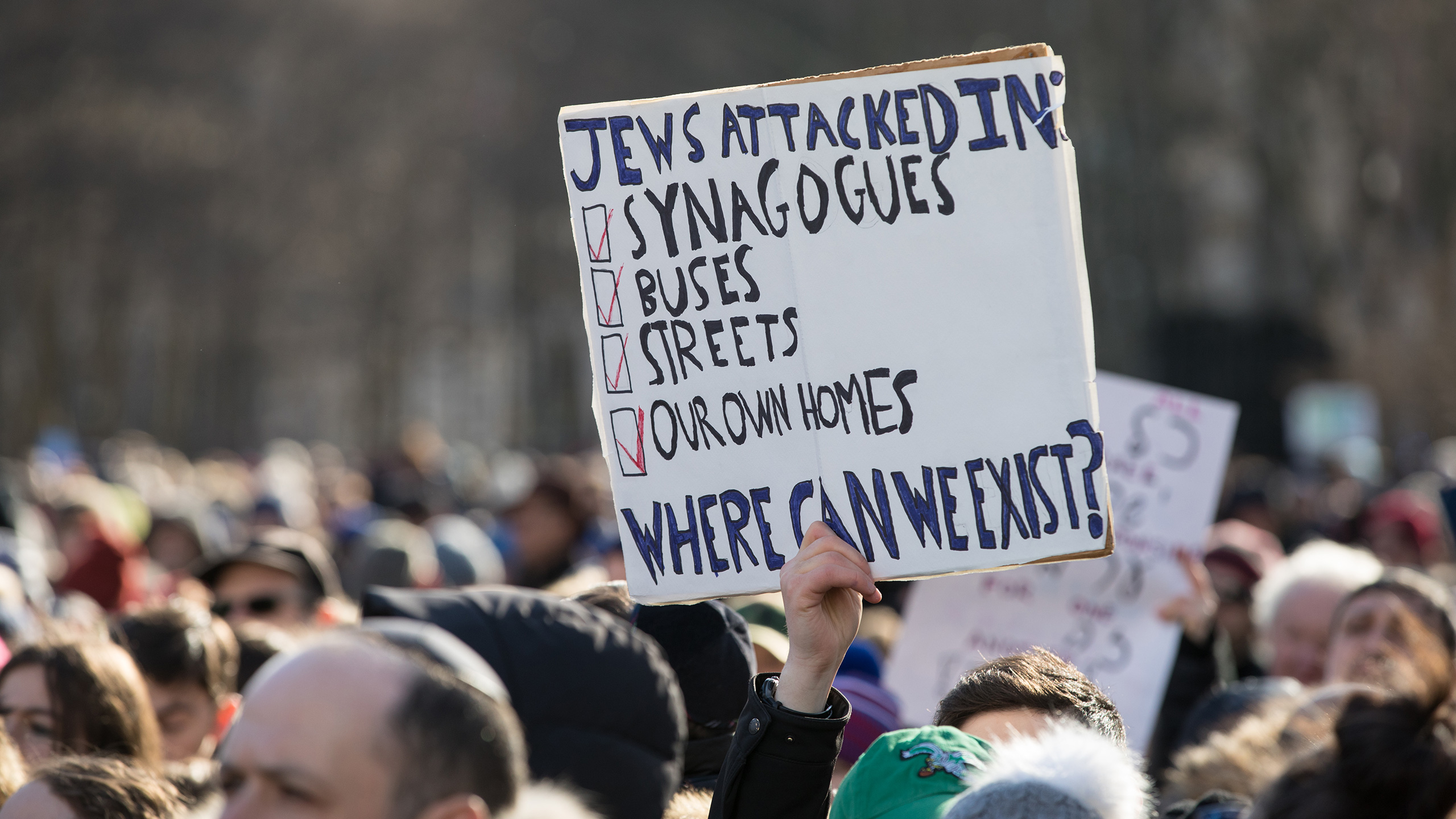How Educators Can Spot Antisemitism in Schools

Fighting Antisemitism (ADL)
Antisemitism, the hatred of Jewish people, is on the rise, both globally and in local classrooms. Many Jewish students are feeling unsafe, isolated, or unheard in school. It is essential for educators to be able to recognize the signs of antisemitism to create safe and respectful learning environments.
Yet, because antisemitism often hides behind stereotypes or masks itself as political commentary, it can be difficult to spot.
Here are some key ways it may appear in classrooms, and what you can do.
Antisemitism Changes its Face
Antisemitism is a unique type of prejudice not only because it is constantly changing, like a mutating virus, but also because it usually does not paint Jews as weak or inferior — but instead as dangerously powerful.
Students may use phrases or jokes that lean on harmful stereotypes about Jewish people being greedy, powerful, or untrustworthy.
Even if presented as “just a joke,” these comments reinforce dangerous ideas.
What You Can Do:
→ Briefly educating yourself on the history of antisemitism is the best way to fight stereotypes and misinformation. For example, if a student says “Jews control the banks” it could be a great teaching moment if it is known that Jews were pushed into money lending in the Middle Ages, as the church prohibited Christians from charging interest, and Jews were often excluded from other professions.
→ Using situations like these as teaching moments is the best way for students to understand not only that it is not appropriate, but also untrue. It is best to reinforce the idea that every one is individual, even within a group, and that generalization makes it seem as though everyone is exactly the same.
Holocaust Denial and Minimalization
“The only reason to deny the Holocaust is to inculcate and foster antisemitism.” — Deborah E. Lipstadt
Holocaust minimization is when the extent of the genocide of the Jews, (or other groups) by the Nazis and their accomplices during World War II, is played down. Holocaust denial is the notion that the Holocaust was fabricated, and simply did not take place.
Holocaust denial and minimization:
Attacks Jewish identity and history: The Holocaust was a systematic attempt to annihilate the Jewish people. Denying or downplaying it erases the lived experiences, suffering, and deaths of millions of people.
Is often rooted in antisemitic conspiracy theories: Holocaust deniers frequently claim Jews fabricated or exaggerated the Holocaust for political or financial gain which is a classic antisemitic trope.
Aligns with extremist ideologies: Holocaust denial has historically been promoted by neo-Nazis and others who openly express antisemitic views.
Phrases like “six million is an exaggeration” and drawing swastikas are forms of antisemitism.
What You Can Do:
→ Reinforce the importance of historical truth and dignity for victims and survivors.
Anti-Zionism as a Mask for Antisemitism
One time, Jewish student came up to me after a ProjectBaldor presentation and was telling me that in history class a peer told him “I don’t like Jews. Free Palestine” after finding out he was Jewish.
Healthy criticism of Israel is not antisemitic (criticism should be made of every country as there is always room to improve). Yet, when it is said “Jews don’t belong in Israel,” use “Zionist” as a slur, or blame Jewish classmates for the actions of a government, this crosses the line.
Definition
Zionism: The movement supporting the Jewish people’s right to self-determination in their historic homeland, which led to the establishment of Israel in 1948.
Although many claim that the anti-Zionist movement is simply criticism, it is seen time and time again that hatred of Israel is often synonymous with hatred of Jews. What starts as political can quickly become personal, and Jewish students often experience this antisemitism firsthand, even if they’re not Israeli.
A swastika (Nazi symbol) and “JEW” taped next to Israeli student’s dorm room (ADL)
Antizionism is displayed as antisemitism when it:
Delegitimizes Israel’s right to exist as a Jewish state (denying Jews the same right to self-determination granted to other peoples).
Applies double standards to Israel not expected of any other country.
Demonizes Israel or Jewish people collectively (e.g., equating all Jews with Israel, or blaming Jews worldwide for Israel’s actions).
Uses antisemitic tropes (e.g., conspiracies about Jewish control, portraying Jews as inherently evil, blood libel-like accusations).
What You Can Do:
→ Clarify the distinction between political debate and identity-based harassment.
Why Spotting Antisemitism Matters
For many students, teachers are the first line of defense against discrimination. When antisemitism goes unnoticed or unaddressed, it creates an unsafe environment for Jewish students and normalizes prejudice for everyone.
By being proactive, teachers not only protect their Jewish students but also strengthen the culture of respect, empathy, and critical thinking in their classrooms.
And while this post gives you a fuller picture of the issue, sometimes what teachers need is something shorter and easier to reference. That’s where our Classroom Guide to Antisemitism comes in.
A Quick Reference for Educators
The blog you’ve just read provides depth, context, and practical strategies. The guide is its companion: a short, easy-to-use version that condenses the essentials into a format you can keep on hand.
Inside you’ll find:
A quick breakdown of what antisemitism looks like in schools
Examples of subtle and overt antisemitism
Practical steps to support Jewish students
Simple strategies to build safer, more inclusive classrooms
👉 Download the free guide here: Classroom Guide to Antisemitism
